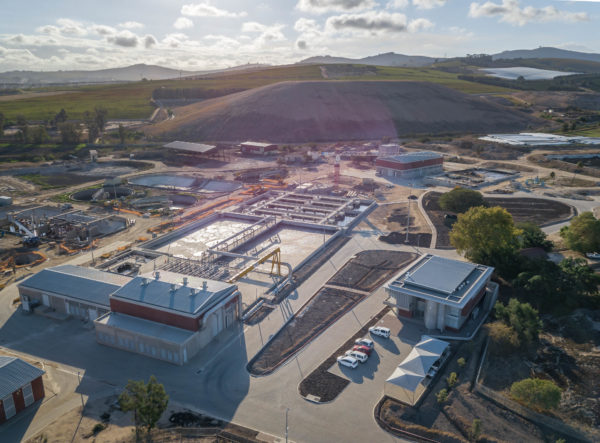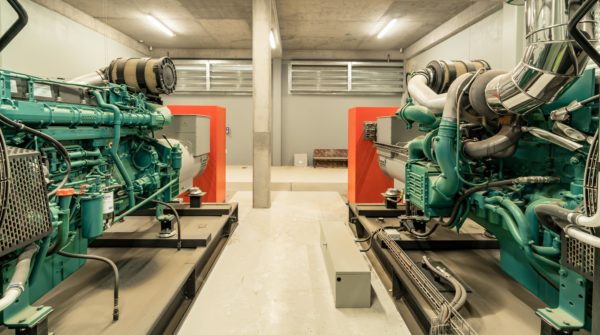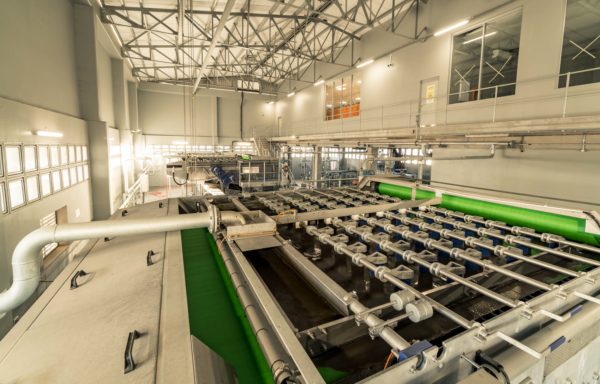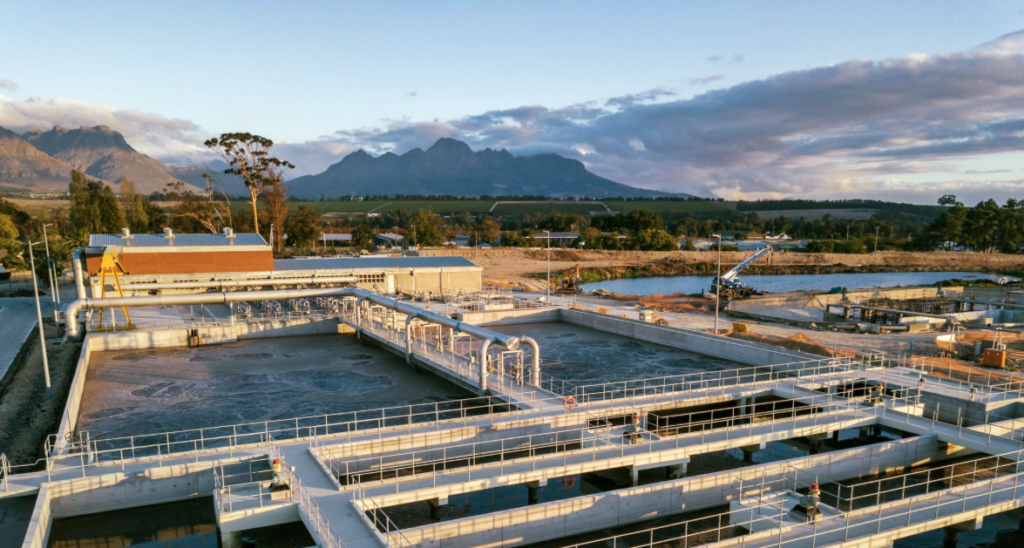Stellenbosch opens eco-friendly water treatment facility
Published on by WWTP Designs Research, Contributing Editors in Case Studies
This week Stellenbosch Mayor Gesie van Deventer joined members of the Executive Mayoral Committee, officials and citizens to open a new Stellenbosch Waste Water Treatment Works.
The brand new facility is the single biggest capital expenditure in the history of the Stellenbosch municipality and is expected to serve the community for generations to come.
On March 4, 2020 the new facility officially launched, becoming the country’s largest ultrafiltration membrane.

The view from outside of the facility.
“The opening of this facility is truly a highlight in my term as Mayor. The matter of the WWTW was one of the first issues that found its way to my desk when I took office in 2016. What I found was very distressing and bordered on an economic and environmental disaster. It is for this reason that the WWTW project was prioritised and expedited,” said Mayor van Deventer.
Rapid urbanisation of the Stellenbosch area placed great pressure of the previous WWTW which also affected other development in the suburb.
Main issues prior to the facility’s opening such as odours and pollution of the downstream water resource and the affects they had on the Cape Town agriculture and tourism industry will become a thing of the past.

A peek inside the facility.
The new facility will greatly improve the wastewater treatment capacity, making use of a membrane biological reactor (MBR) process – an advanced wastewater treatment process that uses ultrafiltration membranes for liquid solid separation instead of conventional clarifiers.
Use of these new technologies will significantly improve the state of the downstream river and the quality of water available to residents.
Working with engineers, the municipality was able to replace conventional chlorine disinfection with methods that are far more environmentally friendly and harness UV disinfection technology.
This technology is also more effective as it kills a wider spectrum of harmful microorganisms. The facility has also been designed to be energy efficient by tailoring the technologies used and minimising pumping through the works. This reduces energy costs.

Water being cleaned inside the facility.
Initial construction of the WWTW started in 2015 and the total budget for the project was R 394-million (excluding VAT). The project was funded by Stellenbosch Municipality and co-funded by the Department of Water and Sanitation through the Regional Bulk Infrastructure Grant.
Quick facts
– This is the largest ultrafiltration membrane biological reactor WWTW in South Africa
– The plant is capable of handling up to 35 Mℓ per day (average dry weather flow)
– The facility is fully compliant with the National Water Act
– The facility is fully automated, allowing it to be monitored, recorded and controlled via a centralised Supervisory Control and Data Acquisition (SCADA) system.
– High odour generation areas on the plant were equipped with an advanced odour treatment system, thus mitigating any odour nuisances from the plant.
“Today we can proudly say that we have one of the most sophisticated waste water treatment facilities in the country, making use of state of the art technology. This is something that we can all be incredibly proud of,” said Mayor van Deventer.
The Municipality has already begun with upgrades at several other waste water treatment facilities across our municipal area, to ensure that all our facilities are able to meet the growing demands of our communities and are able to deliver the highest quality services.
Taxonomy
- Waste Water Treatments
- Wastewater Treatment Plant Design
1 Comment
-
Well done Stellenbosch. It is about time that Stellenbosch takes the lead in SA with new technology in wastewater treatment. Trust the MBR will give many years of cost effective treatment and compliant effluent.
